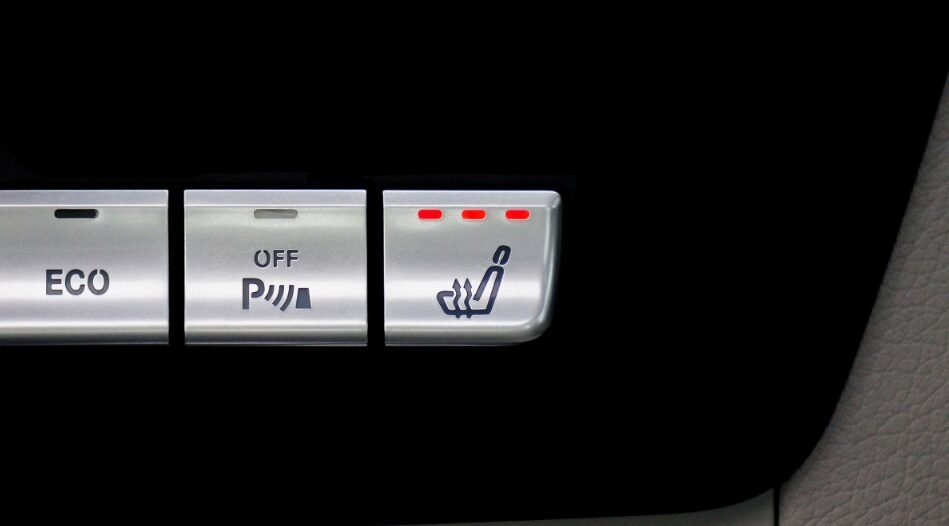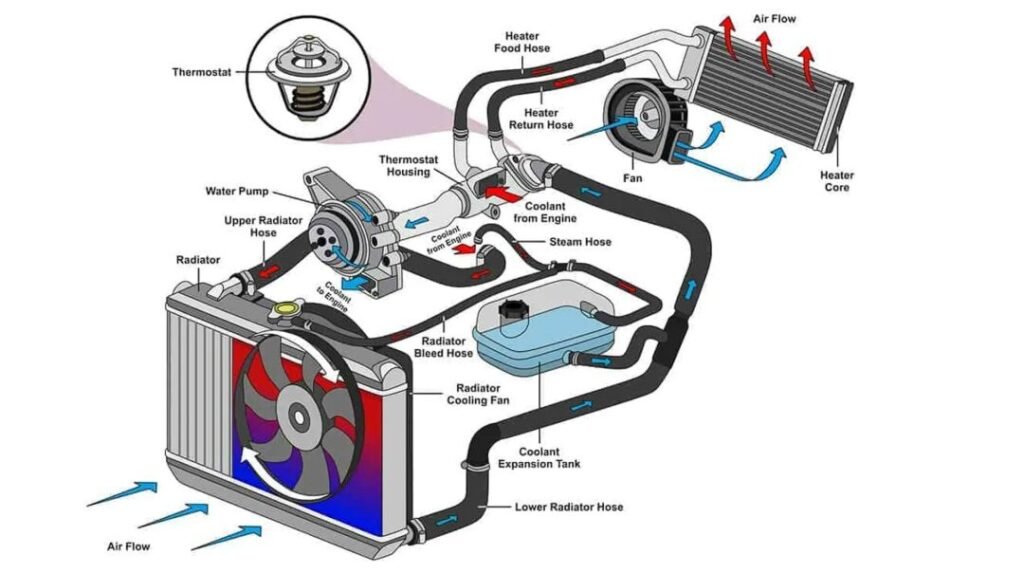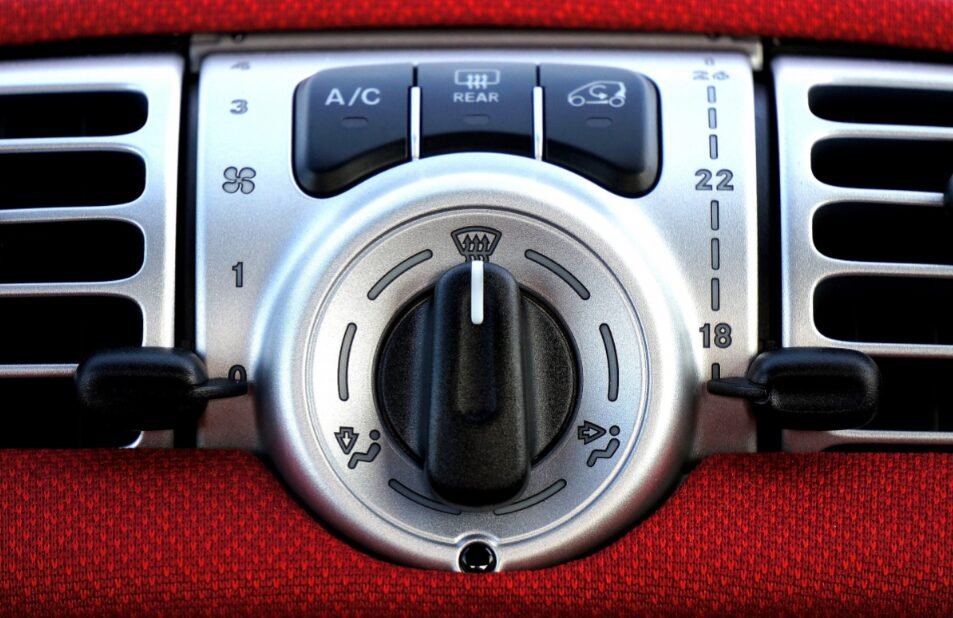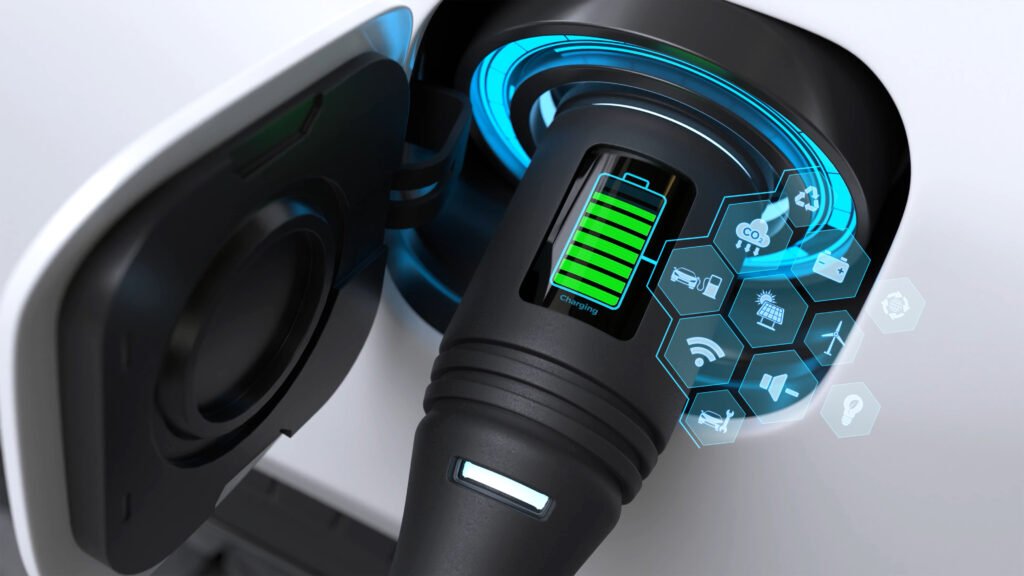You’ve probably wondered how your electric vehicle (EV) keeps you warm on a chilly day. Unlike traditional gasoline-powered cars, electric cars operate differently, and their heating systems are no exception.

As you drive your EV, you might notice that the heating system doesn’t quite work the same way as it does in a conventional car. This is because EVs use electric motors and batteries, which require a different approach to heating.
Understanding electric car heater operation is essential to appreciating the technology behind your vehicle.
Key Takeaways
- Electric vehicles use a different heating system than traditional gasoline-powered cars.
- The heating system in EVs is designed to work with electric motors and batteries.
- Understanding electric car heater operation can help you appreciate your vehicle’s technology.
- EV heating systems are designed to be efficient and effective.
- The heating system in your EV is an important aspect of its overall performance.
How Does the Heater Work in an Electric Car: The Basics
Unlike traditional gas-powered vehicles, electric cars have a distinct heating system that you should be aware of. The heating system in an electric car is designed to provide a comfortable driving experience, and it operates differently from what you might be used to in a gasoline-powered vehicle.
The Fundamental Difference from Gas-Powered Vehicles
In gas-powered vehicles, the heating system utilizes waste heat from the engine to warm the cabin. However, electric cars don’t have this luxury since they don’t produce waste heat like their gasoline counterparts. Instead, electric vehicles rely on their electrical systems to heat the cabin, drawing power from the vehicle’s battery.
This fundamental difference means that the heating system in an electric car is designed to be more efficient and to minimize the impact on the vehicle’s range. The electric car cabin heating system is typically powered by the vehicle’s battery, and it’s designed to work in conjunction with other climate control systems to maintain a comfortable temperature.
Components of an Electric Vehicle Heating System
The electric vehicle heating system consists of several key components, including the heating element, the HVAC (Heating, Ventilation, and Air Conditioning) system, and the climate control system. The heating element is usually an electric resistive heater, which converts electrical energy into heat.

The HVAC system works to distribute this heat throughout the vehicle, ensuring that the cabin is warmed evenly. The climate control system, on the other hand, allows you to adjust the temperature to your liking, making sure that you’re comfortable while driving. The integration of these components is crucial for efficient electric vehicle climate control.
Together, these components work in harmony to provide a warm and comfortable driving experience, even in cold weather conditions. Understanding how these components work together can help you appreciate the technology behind your electric car’s heating system.
Electric Car Heating Technologies
To keep you warm and cozy, electric cars employ a range of innovative heating solutions. These technologies are designed to provide efficient warmth while minimizing the impact on your vehicle’s range.
Resistive Heating Elements
Resistive heating elements are a common method used in electric vehicles to generate heat. These elements convert electrical energy into heat, warming the cabin. They are simple and cost-effective, making them a popular choice for many electric car manufacturers.
Heat Pump Systems
Heat pump systems are another technology used in electric vehicles to manage cabin temperature. They work by transferring heat from one location to another, rather than generating heat from electricity. This process can be highly efficient, as it can provide more energy than it consumes.
A comparison of resistive heating and heat pump systems is shown in the table below:
| Technology | Efficiency | Cost |
|---|---|---|
| Resistive Heating | Low-Moderate | Low |
| Heat Pump Systems | High | Moderate-High |
Battery Thermal Management Integration
Battery thermal management is crucial for maintaining the health and efficiency of your electric car’s battery. By integrating the heating system with battery thermal management, manufacturers can optimize overall vehicle performance. This integration ensures that the battery operates within an optimal temperature range, enhancing its lifespan and efficiency.
Some electric vehicles also use advanced materials and designs to improve heating efficiency. For example, some models use advanced insulation materials to minimize heat loss and reduce the load on the heating system.
Maximizing Heating Efficiency in Your Electric Vehicle
As an electric vehicle owner, you can significantly improve your car’s heating performance by adopting a few simple strategies. Maximizing heating efficiency is not just about comfort; it’s also about preserving your vehicle’s range and overall performance.

Pre-conditioning While Plugged In
One of the most effective ways to maximize heating efficiency is by pre-conditioning your electric vehicle while it’s still plugged into a power source. This means you can heat up your car using the grid power instead of draining your battery. “Pre-conditioning can significantly reduce the strain on your battery when you’re driving, potentially extending your range,” says an expert in electric vehicle technology.
By doing so, you’re not only warming up your car to a comfortable temperature, but you’re also ensuring that your battery is not subjected to the additional strain of heating up the cabin from a cold state. This can be particularly beneficial in very cold climates where the heating demand is high.
Using Seat and Steering Wheel Heaters
Another strategy for maximizing heating efficiency is to use your electric vehicle’s seat and steering wheel heaters. These features allow you to heat the areas that need it most directly, rather than warming the entire cabin. This targeted approach can be more energy-efficient, especially for short trips or when you’re driving alone.
Using seat and steering wheel heaters can make a significant difference in your comfort level without having to crank up the cabin temperature. This not only helps in conserving energy but also enhances your driving experience by providing warmth exactly where you need it.
Range Impact and Conservation Strategies
Understanding the impact of heating on your electric vehicle’s range is crucial. Heating can significantly reduce your range, especially in cold weather. However, by employing conservation strategies, you can mitigate this effect. For instance, using eco-mode, reducing the temperature setting, and removing unnecessary accessories can all help in conserving range.
It’s also worth noting that some electric vehicles come equipped with advanced technologies designed to minimize the range impact of heating. These include heat pump systems and advanced battery thermal management systems. Familiarizing yourself with your vehicle’s specific features and settings can help you make the most out of its heating efficiency.
By implementing these strategies, you can enjoy a warmer, more efficient driving experience in your electric vehicle. Whether it’s pre-conditioning while plugged in, using seat and steering wheel heaters, or adopting range conservation strategies, every little bit counts towards maximizing your vehicle’s heating efficiency.
Conclusion
Understanding how the heater works in your electric car can significantly enhance your driving experience, especially during colder months. The heating system in electric vehicles operates differently from traditional gas-powered cars, utilizing technologies such as resistive heating elements and heat pump systems to maintain a comfortable cabin temperature.
By grasping the basics of electric car heater operation, you can better manage your vehicle’s heating needs, maximizing efficiency and minimizing the impact on your car’s range. Pre-conditioning your vehicle while it’s still plugged in, using seat and steering wheel heaters, and adopting other conservation strategies can help you stay warm without sacrificing too much range.
As electric vehicle technology continues to evolve, we can expect heating systems to become even more efficient. For now, being informed about how your electric car’s heater works can help you make the most of its capabilities, ensuring a warm and comfortable drive whenever you hit the road.
FAQ
How does the heater in an electric car work?
The heater in an electric car works by using electricity from the vehicle’s battery to power a heating system, which can include resistive heating elements or a heat pump system, to warm the cabin.
What is the difference between electric car heaters and those in gas-powered vehicles?
Electric car heaters differ from those in gas-powered vehicles because they don’t rely on engine heat. Instead, they use the vehicle’s battery to power the heating system, providing a more efficient and environmentally friendly solution.
What are the components of an electric vehicle heating system?
The components of an electric vehicle heating system typically include a heating element, such as resistive heating elements or a heat pump, as well as controls and sensors to regulate the temperature and ensure efficient operation.
How do heat pump systems work in electric cars?
Heat pump systems in electric cars work by transferring heat from one location to another, rather than generating heat directly. This process can be more efficient than traditional resistive heating, as it can provide more energy than it consumes.
How can I maximize heating efficiency in my electric vehicle?
To maximize heating efficiency in your electric vehicle, you can pre-condition the cabin while it’s still plugged into a power source, use seat and steering wheel heaters, and adopt conservation strategies to minimize the impact on your vehicle’s range.
Does using the heater in my electric car affect its range?
Yes, using the heater in your electric car can affect its range, as it consumes energy from the battery. However, by using the heater judiciously and adopting efficient heating strategies, you can minimize the impact on your vehicle’s range.
What is battery thermal management integration in electric cars?
Battery thermal management integration in electric cars refers to the system’s ability to manage the temperature of the battery, which can help to optimize its performance, efficiency, and lifespan, while also providing warmth to the cabin.
Can I pre-condition my electric car while it’s charging?
Yes, you can pre-condition your electric car while it’s charging, which allows you to warm or cool the cabin before you start driving, without draining the battery.





